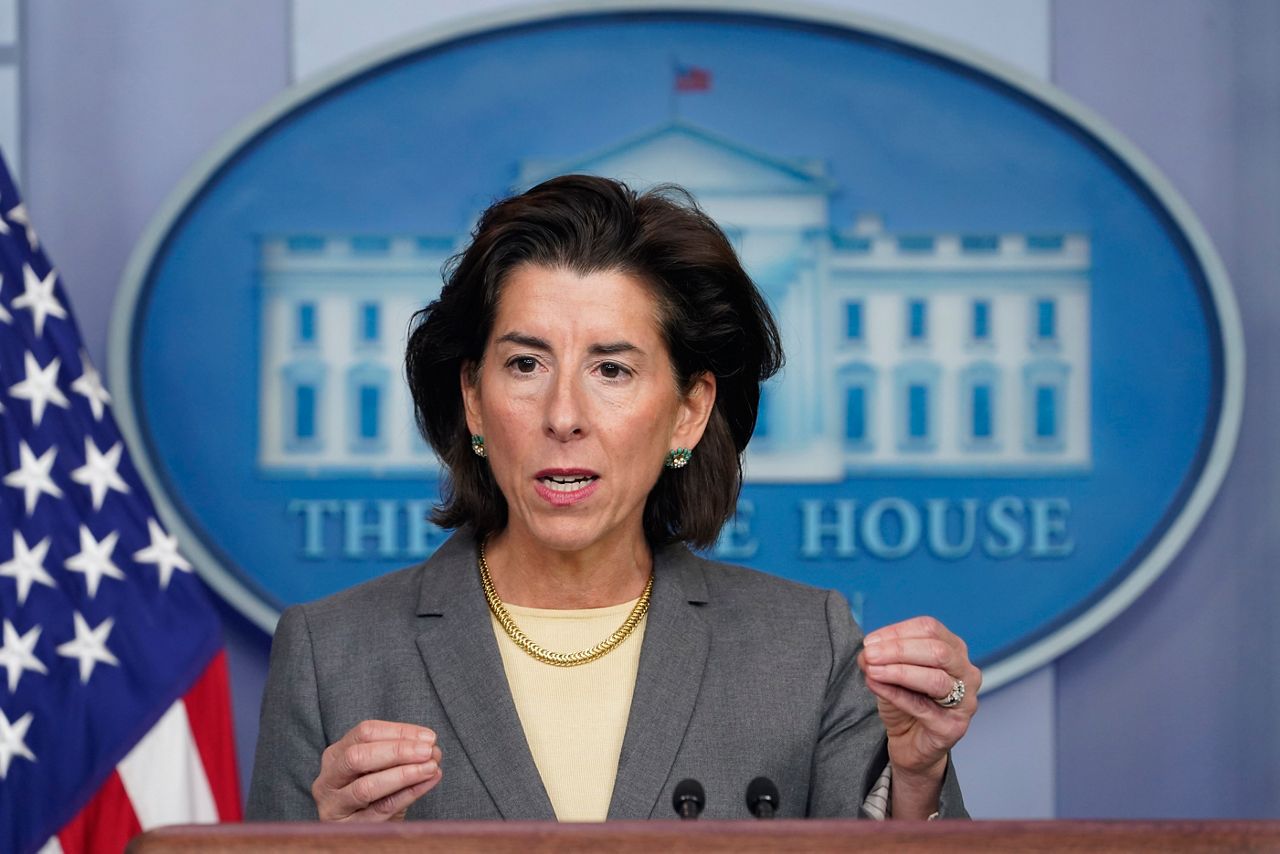The money for high-speed internet expansion in the bipartisan infrastructure bill will take several months or years to roll out across the country, a top administration official said Tuesday, but it could also be the first step in bridging the digital divide in the U.S. and ensuring broadband access for Americans for years to come.
The Infrastructure Investment and Jobs Act, which passed Congress on Friday night, includes $65 billion for broadband infrastructure, affordability and adoption, in order to provide access to tens of millions of Americans without it, something that falls disproportionately on communities of color and Tribal lands.
“It will not be easy. This will be technically difficult. It's an implementation challenge, but it is necessary,” said Commerce Secretary Gina Raimondo at the White House on Tuesday.
“Thirty, forty, fifty years from now, we will look back on this as the turning point — as a critical turning point,” she added, explaining that it will take a “number of months” to launch.
The White House estimates that about 30 million Americans do not have broadband access, while research groups like BroadbandNow put the number closer to 42 million. And a Microsoft analysis found more than 162 million people do not use the internet at broadband speeds.

Once President Joe Biden signs the infrastructure bill, each state will get at least $100 million for broadband implementation, while more money will be allocated based on the number of underserved households in each area.
Each state must submit a detailed plan to the Department of Commerce on how they plan to expand broadband to guarantee “every single person” will get access to high-speed, affordable Internet.
“There will be a tremendous amount of federal oversight and transparency,” said Commerce Sec. Raimondo, whose department includes the National Telecommunications and Information Administration.
“We're going to evaluate that plan, adjust it [and] provide technical assistance to make sure at the end of the day, we hit the goal,” she added.
Just 46.5% of people living on Tribal lands have adopted broadband internet, and about 67% have access, according to the American Indian Policy Institute, a disparity exacerbated by the pandemic.
And white-majority counties in rural areas are 16% more likely to have internet access than Black-majority counties, according to the think tank Third Way, another inequity the Biden administration is hoping to address with the infrastructure bill.
The rollout of broadband improvements will take time, Raimondo said Tuesday, though some aspects of the bill could be felt sooner than others, such as the $14 billion for a new Affordable Connectivity Program.
The program would give a $30 discount on monthly internet costs to low-income households that qualify, a benefit first authorized during the pandemic that will now stretch over years.
Other pieces of the broadband funding — such as laying new fiber for internet lines — will take several months to start rolling out, especially because officials want to make sure they are not “overbuilding,” Raimondo said Tuesday.
“It's important to be realistic and to be honest with people, which is to say: We want to get this right. It's more important to get it right than to rush,” she said. “Not everybody's going to have broadband a year from now.”



